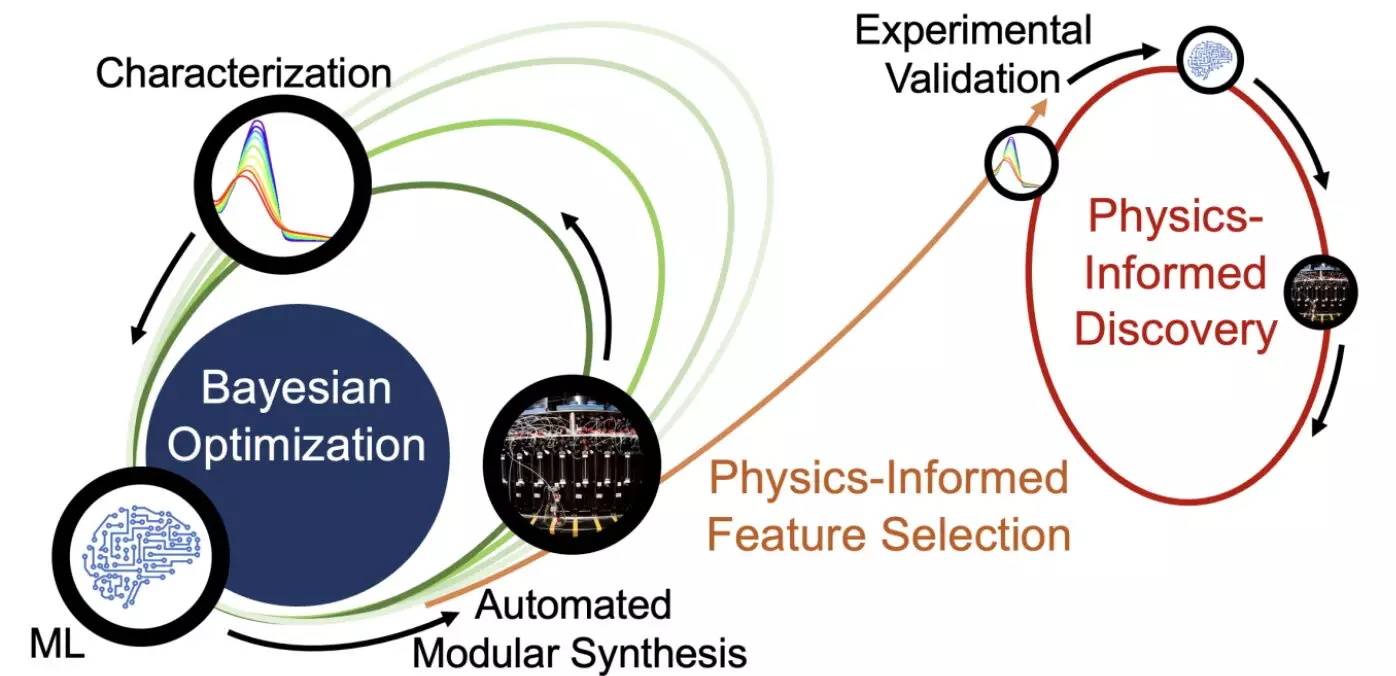In the realm of scientific research, artificial intelligence (AI) has revolutionized methodologies and workflows. However, a persistent challenge remains: the so-called “AI black box.” This term refers to the inability of AI systems to provide clear explanations for their decision-making processes. Scientists often find themselves in a frustrating position where AI can suggest optimal solutions but fails to clarify the rationale behind those suggestions. The complexities of understanding these processes can significantly hinder advancements in fields such as chemistry, particularly in the development of materials for applications like solar energy harvesting.
Research teams are now spearheading efforts to “open the black box,” utilizing innovative strategies that enable deeper insights into the mechanisms by which AI operates. An excellent example comes from an interdisciplinary team at the University of Illinois Urbana-Champaign, where researchers have successfully blended AI with automated chemical synthesis and experimental validation. This synergy has dramatically improved the stability of light-harvesting molecules—essential components for efficient solar energy conversion.
Advancements in Light-Harvesting Molecules
The pursuit of viable organic solar cells has been met with significant obstacles, namely stability and efficiency. Traditional organic photovoltaics—a lighter, more flexible alternative to rigid silicon panels—demonstrate impressive potential but have long suffered from degradation issues upon exposure to light. For over three decades, this challenge has stymied the full commercialization of organic solar panels. Researchers at the University of Illinois recognized this opportunity for improvement and sought to enhance the resilience of light-harvesting molecules essential for converting solar energy into usable power.
Led by notable chemists, including Martin Burke, Ying Diao, Nicholas Jackson, and Charles Schroeder, this research initiative unveiled a pioneering method called “closed-loop transfer.” This method incorporates an AI-driven optimization strategy that allows for systematic and iterative improvements within a controlled framework, ultimately producing light-harvesting molecules with four times greater stability than their predecessors.
At the core of the closed-loop transfer method lies a robust AI algorithm designed to optimize the photostability of light-harvesting molecules. The researchers engaged the AI to recommend specific chemical structures for synthesis. Using an automated chemical synthesis platform, the team initiated multiple rounds of testing and data collection, feeding new findings back into the AI model for continuous learning.
This iterative process led to the creation of 30 novel chemical candidates within just five rounds of experimentation. The collaboration between automation and AI allowed for both rapid synthesis and timely testing of newly formed compounds. Burke emphasized the advantages of modular chemistry in facilitating this process—aligning data acquisition with enhanced chemical exploration.
What truly sets this research apart is its focus not just on yielding optimal compounds but also on demystifying the factors contributing to their superior stability. Rather than concluding the project upon generating successful molecules, the team delved deeper into understanding chemical features that confer photostability to these compounds. Concurrently running algorithms identified and quantified essential attributes that promised enhanced stability under exposure to light.
These findings are reshaping the research landscape, allowing scientists to generate testable hypotheses stemming from AI-generated insights. Traditional methods of exploring chemical space are inherently blind, but the newfound knowledge concerning chemical properties provides a pathway towards more strategically targeted experiments.
Implications for Future Research and Development
The implications of this research extend far beyond the creation of light-harvesting molecules. The methodologies developed through this collaborative effort pave the way for future advancements across a variety of material systems. As Schroeder commented, an envisioned user-friendly interface may empower researchers to input specific chemical functions into AI systems, thereby generating targeted hypotheses for testing.
In a domain where traditional trial-and-error approaches have often been the norm, the promise of a more efficient, predictive method signifies a transformative leap in materials science. Ultimately, it enhances the scope of possibilities, with the interdisciplinary nature of the team reflecting the collaborative spirit that fosters innovation.
This pioneering research effort at the University of Illinois Urbana-Champaign exemplifies the remarkable potential of harnessing AI to unravel complex chemical questions. By elevating our understanding of molecular stability and optimizing organic solar cells, scientists are not only addressing a longstanding issue but also rewriting the narrative of material innovation in the quest for sustainable energy solutions.

